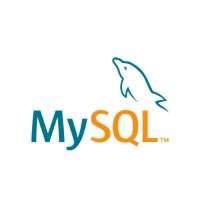
In this database programming and database administration tutorial, we are going to answer the commonly asked question: What is MySQL? We will discuss its features, pros and cons, benefits, and how it fits into the mold of traditional relational database management systems (RDBMS).
Looking to learn MySQL in an online class or online course environment? We have a great list of the Best Online Courses to Learn MySQL to help get you started.
MySQL Explained: What Is It?
MySQL is an open source database and is part of the family of relational database management systems (RDBMS). It has been in existence for over 25 years and is backed by the Oracle Corporation. It is based on the structured query language (SQL) and works for both desktop applications and database-driven web applications as well.
MySQL is pronounced MY-S-CUE-EL, though you may hear database programmers or db admins refer to it as “My Sequel”. It originated in 1994 and was taken over by Sun Microsystems in 2008. Sun Microsystems would later be acquired by Oracle, and they are the current gatekeepers for MySQL.
Is MySQL a Programming Language?
People often confuse MySQL with a programming language, when, in fact, it is not. Instead, MySQL is a relational database system that uses a client-server model. The portion of the technologies name “My” refers to the creators daughter, while “SQL” is the database programming language used to manipulate data within a MySQL system.
What is MySQL’s Client-Server Model?
The phrase “client-server model” may be confusing for new database programmers, but it can easily be broken down by describing the “client” and “server” portions of the term. When a user installs and runs any relational database management system software, that PC or computer is now known as a “client”.
In order to retrieve, add, or manipulate data, they must connect to a database or RDBMS “server” to do so.
Read: mariadb vs MySQL
What are the Benefits of MySQL?
MySQL has a number of benefits for both database programmers and database administrators. Aside from the fact that MySQL has been around for nearly three decades – meaning it has had plenty of time to work out its bugs and issues – the RDBMS is open source, meaning that developers have access to the source code and have been able to contribute to its growth, features, security, and sustainability. Backed by Oracle, the MySQL database tool is not going anywhere anytime soon and is an integral part to a plethora of tech giants operations, including notables like Facebook, Google, YouTube, and Yahoo!.
Other benefits of MySQL include:
Reliability and Dependability
As stated, with over 25 years of development, MySQL is one of the oldest and widely used database systems on the planet. Users across the globe, during this time, have tested its features and vulnerabilities and it has been used in virtually every production environment by organizations large and small. Because of this, the RDBMS can be trusted to run in the majority of environments, use cases, and business-critical/mission-critical capacities.
Availability
MySQL is known for its “high availability” among database programmer and database administrators. “High availability” refers to a databases performance with regards to database crashes, downtime, and disaster recovery scenarios. This is especially important for companies that offer service-level agreement commitments, promising 99% or higher uptime (such as web hosting companies). Organizations trust MySQL systems to not only function with high availability, but also use replication to secure data in the event of a system failure or outage.
MySQL is also high-performant, as it uses cluster servers to allow for the manipulation of data.
Security
MySQL relies on an Access Privilege System, as well as stringent user account management to help secure data in MySQL databases. Strong layers of host-based user verification and password encryption, as well data encryption, are all part of the MySQL security settings and features. MySQL also follows a large number of security governance and regulation policies in order to be of use in governmental agencies, making it one of the most secure RDBMS in the world. Add to that the years of testing (as described above), and MySQL is a formidable, secure database system solution.
Database Efficiency
MySQL is a high-performant database solution, thanks to its storage engine framework, which allows database administrators to tweak and configure MySQL database servers for a fine-tuned performance. MySQL can be used for large datasets and as a transactional database, so it needs to be able to handle millions of requests and queries – which it is more than capable of doing, utilizing full-text indexing and memory caching.
Usability
MySQL is known for its ease of use, low learning curve, and simple installation. In fact, most users can have a MySQL install up and running in less than 30 minutes, regardless of the platform you run it on. This ease of use, however, does not come at a cost to performance or features: the RDBMS is among the most powerful and trusted on the market.
Read more MySQL tutorials and database programming guides.
The post What is MySQL? appeared first on Database Journal.

